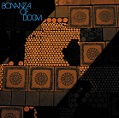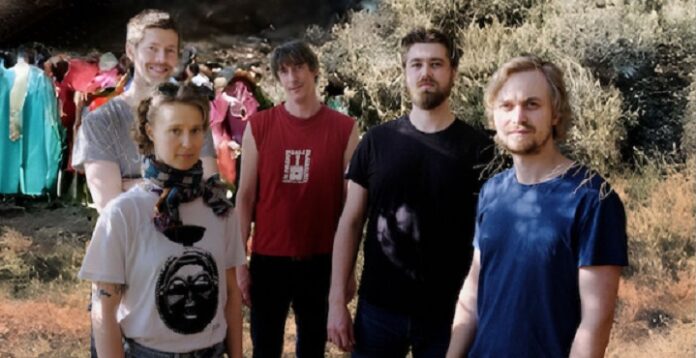Here in the third decade of the 21st century, it almost seems irrelevant to think in terms of genre. Certainly a good number of musicians working in the more exploratory areas of their fields cheerfully draw on, meld, and refigure influences and materials from musics sometimes closely related, and at other times widely separate, in sound and conventions. The Norwegian quintet Bonanza of Doom, whose self-titled debut album was recently released, is made up of just such eclectically minded musicians.
The group’s name, as well as the titles of the five tracks that make up the album, gives the impression that a heavier type of rock or electronic music will figure in its mix. And to an extent it does. But jazz has a particularly strong, if not predominant, presence. Alto saxophonist Signe Emmeluth, who also plays synthesizer, has a jazz background and is known as the leader and composer for Amoeba, a quartet that includes drums, piano, and guitar in addition to Emmeluth’s saxophone. Guitarist Karl Bjorå is a member of the Megalodon Collective, an excellent septet playing a kind of post-Ascension big band jazz. Like Emmeluth and Bjorå, drummer Ole Mofjell has roots in jazz, but he has also played experimental ambient music with the trio Weejuns. Magnus Skavhaug Nergaard plays both double bass and electric bass and has played jazz, noise, rock, and folk. His trio Monkey Plot is a guitar-centered improvising group that in its acoustic configuration plays a kind of pastoral jazz, while playing rock-influenced music in its electric configuration. And drummer/modular synthesist Martin Langlie comes from the Valkyrian Allstars, a group inspired by Norwegian folk music and featuring Norway’s traditional hardangar fiddle, an eight- or nine-string violin.
 On the album itself, jazz-inflected free improvisation provides the center of gravity. This is signaled as early as the opening track Doomay, a twenty-four-second-long outburst that ends abruptly. Bannoo features open blowing from saxophone and guitar over a tension-ridden pulse from both drummers; it’s free jazz whose synthesized interventions give it a contemporary flavor. At nineteen minutes long the title track, Bonanza of Doom (don’t die), is a field-and-figure improvisation that develops at a deliberate pace. It begins quietly with a curtain of electronic sound that will go on to serve as a background field, enhanced and counterpointed by abstract sounds from the guitar. The guitar moves to the foreground and with the saxophone improvises a kind of free minimalism comprising repeated and varied brief figures; the piece builds to a noisy climax on the backs of both drummers playing full-on. Eternal Praise is a very different matter. Here Emmeluth appears on synthesizer rather than saxophone, helping to cast the piece as a bit of electronic neo-psychedelia drifting on a chaotic pulse of contrasting polyrhythms. The closing piece, Hymn of Doom, sees us off with a dense, high-volume collective improvisation.
On the album itself, jazz-inflected free improvisation provides the center of gravity. This is signaled as early as the opening track Doomay, a twenty-four-second-long outburst that ends abruptly. Bannoo features open blowing from saxophone and guitar over a tension-ridden pulse from both drummers; it’s free jazz whose synthesized interventions give it a contemporary flavor. At nineteen minutes long the title track, Bonanza of Doom (don’t die), is a field-and-figure improvisation that develops at a deliberate pace. It begins quietly with a curtain of electronic sound that will go on to serve as a background field, enhanced and counterpointed by abstract sounds from the guitar. The guitar moves to the foreground and with the saxophone improvises a kind of free minimalism comprising repeated and varied brief figures; the piece builds to a noisy climax on the backs of both drummers playing full-on. Eternal Praise is a very different matter. Here Emmeluth appears on synthesizer rather than saxophone, helping to cast the piece as a bit of electronic neo-psychedelia drifting on a chaotic pulse of contrasting polyrhythms. The closing piece, Hymn of Doom, sees us off with a dense, high-volume collective improvisation.







